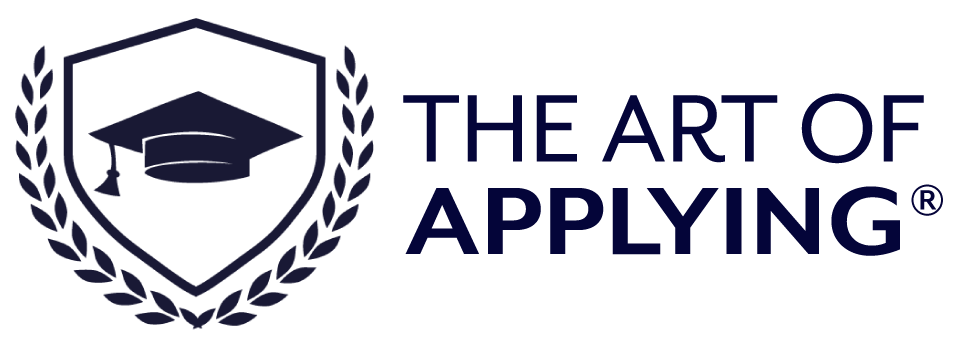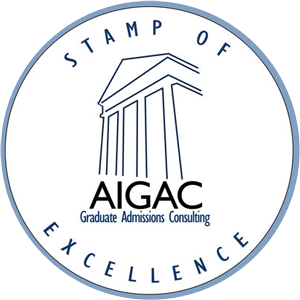From the resume to the essays, grad school applications have a lot of moving parts. Unfortunately, that means many things can go wrong in an application. If your dream school rejected you, you might be wondering what happened.
Our founder, Kaneisha, recently sat down with one of our clients, “Arthur”, to review his rejected application to the Harvard Kennedy School’s Mid-Career MPA program. We’ve summarized the notes Kaneisha gave Arthur and added comments about how other applicants can learn from his application experience and Ding Analysis.
At The Art of Applying®, we work with clients to make sure they put their best application forward. One of the services we provide within our Hourly Coaching program is called a Ding Analysis, which is an in-depth analysis of your submitted application with a writeup of hypotheses of why you were rejected, and suggestions for a successful reapplication. During the Ding Analysis, one of our consultants sits down with a client and reviews the entirety of their rejected application materials. The consultant reads and critiques all of the applicant’s materials and provides clear, constructive, and kind feedback. While much of the feedback often ties to the individual’s profile and experience, much of the advice is also universally applicable to submitting a strong application to Harvard Kennedy School and other top graduate schools.
Of course, only the admissions committee will know exactly why they chose to reject an application. Many applicants make the same mistakes because they don’t know better. They suffer from the challenges of inexperience, the common situation of “not knowing what you don’t know.” If you learn some of the common pitfalls, you can avoid making them when applying to grad school and improve your overall odds at getting into your dream schools.
Key Takeaways from Arthur’s Ding Analysis
Choose the right program for you.
Kaneisha’s insights ranged from comments about Arthur’s overall profile, starting with the program at HKS he chose to apply to. In Arthur’s case, he technically met the requirements of the program he chose. However, his profile would have been more competitive had he applied to a different degree at HKS that more closely fit his years of work experience and academic profile. When you’re applying to a grad school, you may be able to choose from several programs. To put your best foot forward, make sure you’re applying to the program that’s the best fit for your background and goals as well as the program for which you’d be the most competitive candidate for admission.
Maximize your resume, and carefully explain short-lived experiences.
Outside of the program that he was applying to, Kaneisha also pointed out areas of Arthur’s resume that were not as fleshed out as they could have been. Sometimes it can make sense to highlight certain aspects of your experience more than others.
In Arthur’s case, he had some experience that stood out on his resume. However, this experience was surprisingly short-lived and not explained or addressed elsewhere on his application. Kaneisha pointed out that not acknowledging this experience likely gave the admissions committee pause. Additionally, Kaneisha shared that MPA programs generally accept longer resumes than just one page, so Arthur had much more room to expand on this experience than he did in his submitted application. While certain programs favor one-page resumes, at The Art of Applying®, our guidance is that well formatted resumes (with lots of white space and normal-sized fonts) up to four pages long are acceptable for policy school programs. Keep this in mind if you plan to apply to policy school.
Consider how your test score can boost the competitiveness of your profile.
In addition to her notes on Arthur’s resume, Kaneisha also provided insight into whether a higher test score might improve his overall profile. In some cases, a higher test score can boost an applicant’s odds, but not always. Having an expert weigh in on whether or not retesting can make a difference in an application may save an applicant a lot of time and effort.
In general, at The Art of Applying®, we find that applicants overemphasize the importance of high test scores and drastically underemphasize and under-prioritize the importance of a well-formatted, fleshed out resume and compelling, cohesive, and concise essays.
Directly address the essay prompt early in the essay.
Regarding his essays, Kaneisha had several pieces of advice. First, she advised Arthur to answer the prompt directly in the essay’s first few lines. As tempting as it can be to start with a quote (don’t do it!), story, or drawn-out metaphor, clearly and directly answering the prompt should be the top priority for a policy school essay. This way, the reader won’t feel lost about whether or not the applicant answered the prompt. Sometimes, an essay sufficiently answers a prompt, but the applicant buries the lede with preceding paragraphs, and the reader gets lost along the way. The smartest approach is to make sure this doesn’t happen by being clear and upfront. Once you have clearly answered the prompt, you can then go into a story, metaphor, or a very carefully selected, not overused quote. And speaking of quotes…
Don’t start your essays with a quote.
Many applicants choose to begin their essays with quotes, but this approach has its faults. Namely, it relies on another person’s words to convey your thoughts from the very beginning of the essay instead of relying on your own voice. It’s better to spend the first few lines of your essay answering the prompt clearly than to share a quote that may be overused and may not even get your point across.
Be mindful of your biases.
Kaneisha offered some advice that all applicants can take into consideration for their essays. First, be mindful of displaying gender bias. If you reference an interest in particular courses at the school you’re applying to, it is notable to admissions committee members if you only name men, which is a persistent problem in scholarly research, academia, and the corporate world. Our simple advice at The Art of Applying® is to make sure to list at least one course taught by a woman in the subject area that interests you. Many applicants name only courses taught by men without even realizing it. Keeping an eye on how your biases might pop up can help you avoid this common mistake.
Avoid typos.
Finally, we’ve all heard this last piece of advice, but it remains true. Avoid typos as much as possible. Misspellings or incorrect phrases happen to the best of us, but they can also taint an admissions committee member’s opinion of an applicant. Make use of spell check and ask friends, colleagues, or hired experts like us to proofread your materials to avoid leaving a bad impression on the admissions committee.
While Kaneisha shared the tips above specifically about Arthur’s HKS application, all applicants can learn from her feedback. Avoid these missteps to put your best application forward. Of course, having a dedicated and experienced expert like the ones on our team at The Art of Applying® review your materials is always helpful. If you need help with your application, sign up for a Quick Call with our team today.



Leave a Reply